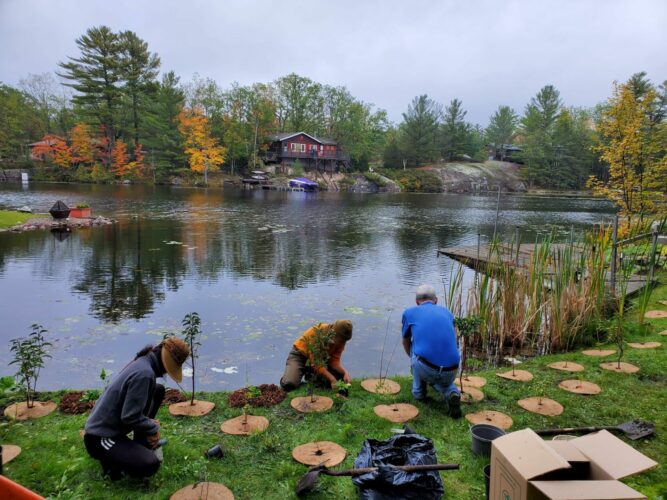By Watersheds Canada
Headline photo by Luke Moore
Perth, ON – There are many themed days dotted throughout the calendar, with today’s special day being World Water Day (March 22, 2024). These unofficial holidays help draw our attention to things that are a part of our everyday lives. These vital things often fade into the background and can be taken for granted. Without paying close attention and taking proactive steps to protect and steward them, these things can disappear. Such is the case for many communities across the country who are experiencing decreases in their local water quality and quantity.
Having a World Water Day on March 22nd each year is an interesting paradox as there is no day within the calendar that is not influenced by water. Seventy-one percent of the planet’s surface is covered in water, with 2.5% of that being freshwater. Our planet’s watery ecosystems influence everything from industry and trade routes, tourism and leisure time, wellness and health, stormwater management, and homes for countless species, including humans. Water is the foundation of life.
Since water shapes so many parts of human society, it is no surprise there are numerous organizations leading restoration and protection programs to benefit it. There are many threats to water health, such as nutrient loading, eutrophication, climate change, invasive species, erosion, drought, and flooding. With so many pressure points and decades of damage to be reversed, many hands are required to take suitable and impactful action.
“Watersheds Canada is a leader in lake stewardship and habitat restoration”, says Robert Pye, Executive Director for Watersheds Canada. “As a national charity, we partner alongside industry, grassroots groups, and property owners to ensure every day of the year is one focused on protecting Canada’s freshwater.”
Lack of education and awareness are issues often cited in discussions regarding water issues. These issues are nuanced and long-standing which can make it difficult to keep up the needed attention, stakeholder “buy-in”, meaningful ground-level impacts, and longstanding funding. A single day cannot encompass them or solve any issues that water faces, so it is up to organizations like Watersheds Canada to continue the work year-round. With this constant attention and care, we can ensure lasting impacts are possible for the country’s lakes, rivers, and shorelands.
Effectively changing or mitigating the continuation of freshwater degradation will necessitate reducing the education and awareness barriers. One of Watersheds Canada’s flagship programs, The Natural Edge, benefits water health by reducing these barriers. This one-of-a-kind program focuses on shoreline renaturalization by using native plants and the custom-made Natural Edge iOS App, Canada-wide Native Plant Database, and self-guided resources. Shoreline property owners, agricultural property owners, or municipal staff complete a restoration planting on private or public property, ensuring pollutants are taken up before entering the waterway, shorelands are resilient against erosion and wave action, and there is ample habitat for shoreland species.

“Native plants protect the water that all of us rely on and enjoy,” said Pye. “Healthy shorelines are important to Canadians and that priority is built into the programs that our organization delivers.”
To celebrate this year’s World Water Day, Watersheds Canada offers a number of FREE resources developed to promote the importance of freshwater and shoreland areas. In particular, Watersheds Canada’s ‘Guide to Preparing a Shoreline Naturalization Planting Plan’ is a comprehensive and step-by-step planting plan template to assist people assessing their property’s site conditions ahead of a planting project. The guide is divided into four parts to ensure project success: draw the planting area, assess planting area conditions, choose plants, and maintenance plan.
“Our organization provides free, science-backed resources that are easy to follow. We want waterfront association members, government officials, educators, and families who care about their lakes, rivers, and tributaries to have the resources they need to take action. Canada’s waters will only be protected with all of us working together,” added Pye.
Help protect our water and visit watersheds.ca to access free resources, programs, and guidance from Watersheds Canada.









